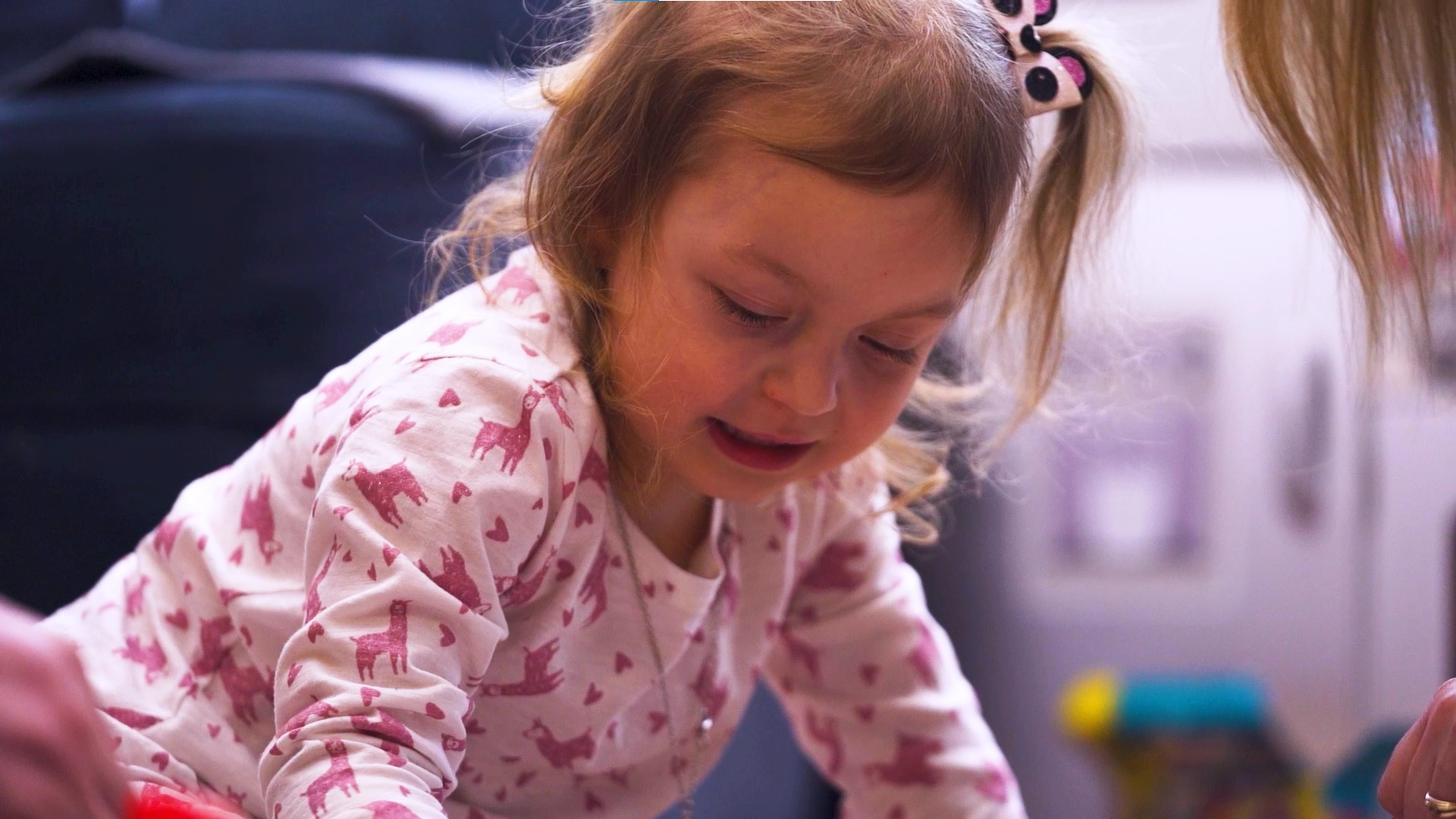Lidia was born prematurely at 29 weeks gestation. In her first year of life, the girl was diagnosed with spinal-cerebellar ataxia and Hirschsprung's disease. Spinal-cerebellar ataxia is a rare neurological disorder characterised, among other things, by difficulties in motor coordination. Hirschsprung's disease is a rare, congenital disorder of intestinal innervation that is genetically determined.
Spinal cerebellar ataxia – what kind of disease is it?
Spinal cerebellar ataxia is a rare genetic disorder that affects the body’s motor coordination. The disease results from damage to the cerebellum or spinal cord, which are important parts of the nervous system responsible for motor coordination and balance.
There are different forms of spinal cerebellar ataxia and the severity and speed of progression can vary greatly from person to person. Symptoms depend on the type of disease and may include impaired balance and coordination, difficulty speaking and swallowing, tremor of the limbs, problems walking, and disturbances in sensation and spatial perception. The disease progresses slowly and leads to a gradual deterioration in the functional capacity of those affected.
Unfortunately, spinal cerebellar ataxia is an incurable disease and treatment is primarily aimed at relieving symptoms and improving the patient’s quality of life. One treatment is stem cell therapy, which can provide relief and improve the patient’s condition.
What’s Lidia’s story?
Lidia was born prematurely in the 29th week of pregnancy and had health problems from the beginning of her life. She developed bronchopulmonary dysplasia and had difficulty eating. The girl’s parents noticed that their daughter was not reaching the usual developmental milestones for her age and began regular rehabilitation. Unfortunately, despite their time and effort, they saw no progress in their daughter. After consulting a geneticist, Lidia was diagnosed with an incurable disease: spinal cerebellar ataxia, which causes problems with movement, balance and equilibrium. Lidia was unable to walk independently and needed the help of her parents. She also suffered from painful muscle spasms all over her body.
Effects of stem cell therapy
Lidia’s parents learned about stem cell therapy. After an initial medical examination, the little girl was approved for stem cell therapy from the umbilical cord. Five days after the stem cells were administered, Lidia started walking. At first only with help, but with each day she made more and more progress and began to walk like a normal child. The therapy helped her get rid of the symptoms of cerebellar ataxia and also improved her overall condition. The painful sprains that caused the girl great pain disappeared. Her speech improved significantly; Lidia began to speak in complete sentences.
“In Lidia’s case, the muscle spasms started to subside. At first they went down to fifty a day, but after the fourth injection of stem cells they stopped altogether. Only at first Lidia walked on all fours and after the fifth injection of cells her daughter started to climb stairs normally.” – says Mrs Ewa, Lidia’s mother
Both the treating doctor and Lidia’s parents are in favour of continuing the stem cell therapy, as the treatment has achieved very good results and Lidia can lead a normal life.











